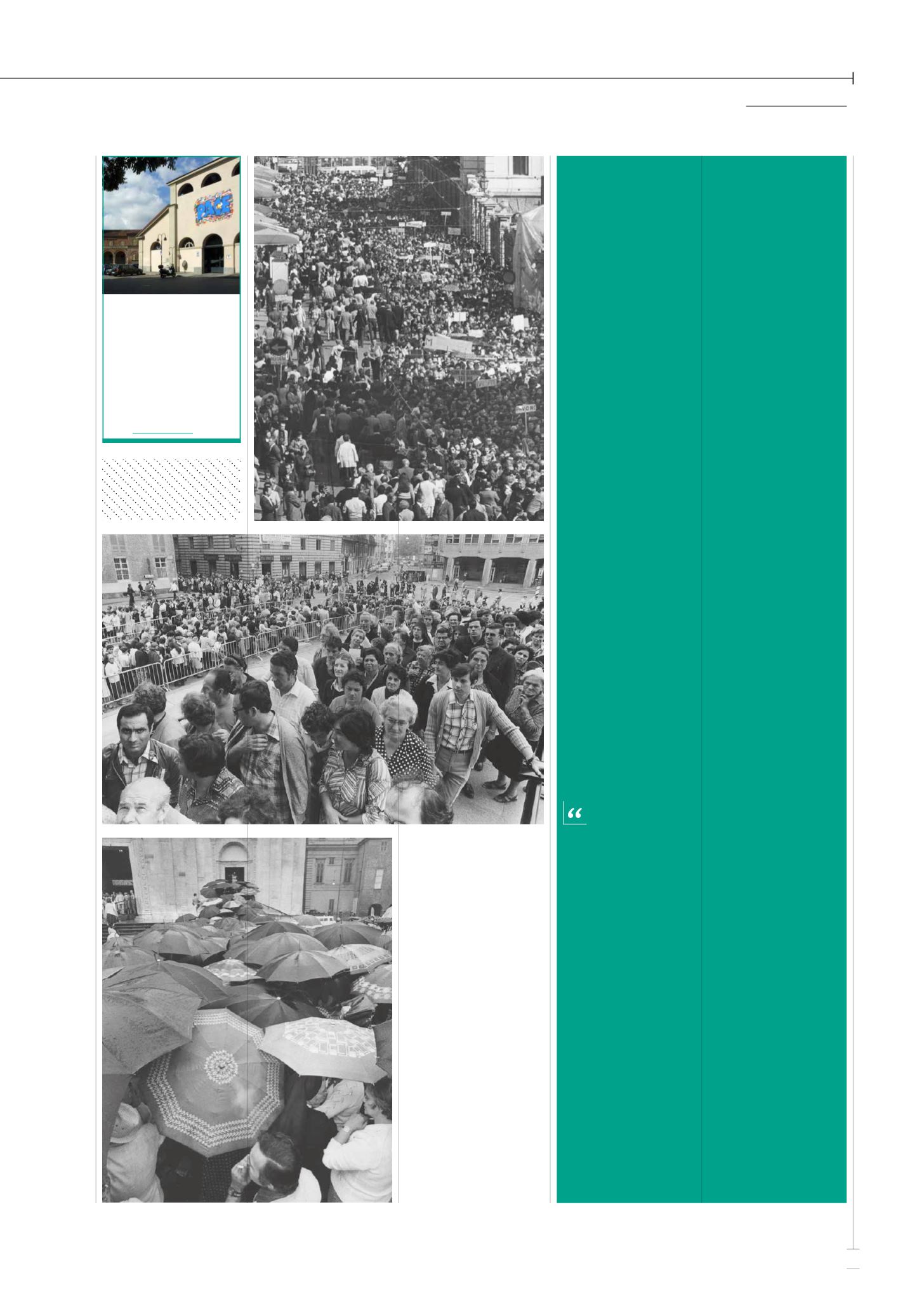
 www.museotorino.it
www.museotorino.it
Giornata record ieri per
la Sindone
: ecco via XX
settembre invasa dalla grande
«coda»
, 2 ottobre 1978. Archivio
Storico della Città di Torino.
L’attesa per vedere
il sacro lino è lunga
: ieri la
coda dei pellegrini arrivava
sino a via XX settembre
,
30 agosto 1978. Archivio
Storico della Città di Torino.
Pellegrini sotto la pioggia
,
27 agosto 1978. Archivio
Storico della Città di Torino.
Arsenale della Pace (Sermig)
L’Arsenale di costruzione di
artiglieria di Borgo Dora e le
adiacenti caserme, dopo l’esplosione
nel 1852, vengono ricostruiti su
progetto di Giovanni Castellazzi
a partire dal 1862. Gli edifici,
danneggiati nel corso del secondo
conflitto mondiale, dopo anni di
abbandono vengono recuperati e
trasformati in Arsenale della Pace.
leggi su
www.museotorino.itThe Shroud of Turin
—
The Exposition, an event
which involves the whole city.
No other city has a religious “sign” like this. People
come here to venerate an image which is not a relic:
the pilgrimage to the Shroud is really unique. Unique
is also the involvement of the city in which the Cloth
is hosted for more than 400 years. Volunteers are the
real image of the Exposition and of the city. This "love
to the Shroud" usually occurs during the Expositions
or dramatic events: as it happened in the night of April
11th 1997, when the fire broke out in the Royal Palace
damaging the Guarini Chapel and reaching also the
Cathedral. The Shroud survived and the very next day
restoration works started, and people were able to collect
substantial sums of money: it was a feeling of protection
of the Shroud to increase solidarity. The 2015 year offers
not only religious events but also civic ones, because they
concern experiences, memories, projects which involve
the whole city: two examples are the Shroud and the
Salesian bicentennial, which marks the Bicentenary of
the birth of Saint John Bosco, the founder. He was a saint
of the Catholic Church, but also a priest from Turin, an
educator, a sociologist, a cultural operator and editor.
In his native city his works have left marks that can be
found on the fabric of the Turin society. It is this fabric
the common ground where two events like the Exposition
and the Bicentennial find their exact location. ■
No other city has
a religious “sign” like this
7
















